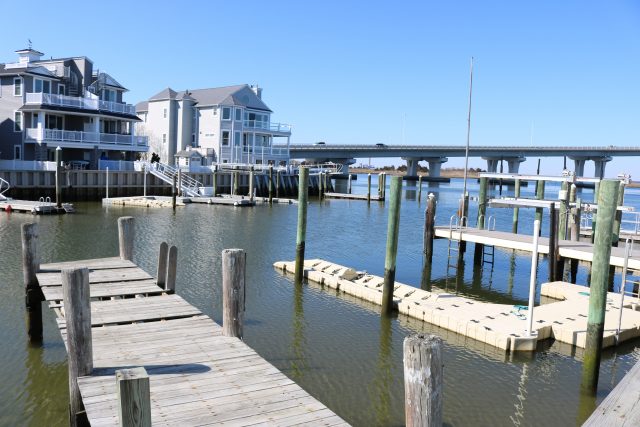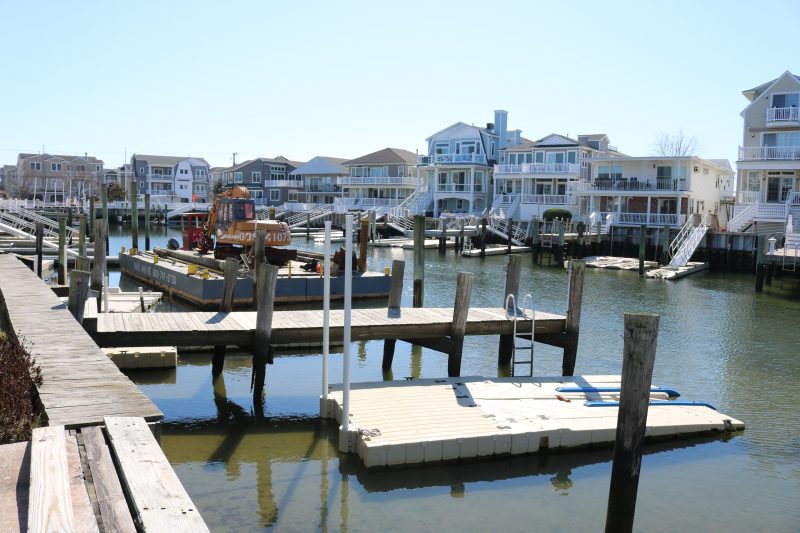
By DONALD WITTKOWSKI
In simple terms, it is described as a “bathtub.” But this isn’t anything like the bathtub in your home.
Instead of filling up with water, it will capture large amounts of muddy sediment in Snug Harbor, one of Ocean City’s most troublesome spots for muck and silt accumulating on the bottom of lagoons along the back bays.
Also known as a “sediment trap,” the project will be part of the city’s 2020-2021 dredging program proposed by Mayor Jay Gillian when he presents his five-year capital plan to City Council in March.
“It likely will be part of a larger contract for other dredging when specifications are drawn up over the summer,” city spokesman Doug Bergen said in an email Monday.
Ocean City has been spending millions of dollars for an ambitious dredging program to clear out the sediment-choked channels and lagoons along the back bays. In some places, the sediment is so thick that boaters are unable to navigate through the shallow lagoons at low tide.
Snug Harbor, a quaint lagoon off Bay Avenue between Eighth and Ninth streets, has experienced a chronic buildup of sediment over the years. It is a location that requires repeated dredging by the city to make it deep enough for bayfront homeowners to enjoy their boats.
“We have more accumulation in Snug Harbor than anywhere else,” explained Eric Rosina, vice president of ACT Engineers, a consulting firm that oversees the city’s dredging program.
Hoping to reduce the amount of sediment building up, Ocean City has been approved by state and federal agencies to experiment with the sediment trap at the mouth of Snug Harbor north of the Ninth Street Bridge.

Although sediment traps have been used before at rivers, this will be the first of its kind tested in a tidal environment in New Jersey, Rosina said.
Essentially, it will be a large hole, or “bathtub,” dug in the bottom of the channel, he explained.
“It’s a bathtub, a deeper depression outside of the lagoon that will capture the flowing sediment that’s on the bottom of the bay,” he said.
The dimensions of the proposed sediment trap are 335 feet long by 132 feet wide and 16 feet deep.
“It’s all on the bottom. It’s a hole that we’ll dig and will be deeper than the rest of the lagoon,” Rosina said.
ACT Engineers says in a description of the project that the shape and location of the sediment trap will allow it to be “efficiently dredged and maintained, thereby playing an important role in keeping waterways open.”
If successful, the sediment trap technology could be utilized in other channels and lagoons to enhance the city’s dredging program, according to ACT Engineers.
Rosina said the cost of the project will not be known until construction bids come in by late summer or early fall. The sediment trap would be part of the 2020-2021 dredging program getting underway this coming fall.
It is estimated that up to 18,000 cubic yards of sediment could be captured in the trap. Once it is collected, the sediment may be used to help restore the eroded shoreline of Shooting Island, a 133-acre island that sits in the middle of the back bay off Tennessee Avenue.

Ocean City has been in discussions with the New Jersey Department of Environmental Protection’s Division of Fish and Wildlife about possibly rebuilding Shooting Island’s eroded wetlands by using sediment dredged from the bays as an environmentally-friendly material.
The benefits of the project would be twofold: Shooting Island’s fragile wetlands would be restored, while Ocean City would gain another disposal site for material taken out of the back bays during its extensive, multiyear dredging program, officials said.
In the process, the rebuilt wetlands at Shooting Island would create a stronger natural barrier to help protect the city during coastal storms.
Shooting Island is an uninhabited flat land mass under threat from erosion that has been occurring for decades.
Mayor Gillian and other officials say the wetlands restoration plan will create coastal resiliency, providing an environment for the wildlife to continue to thrive and to reduce the storm impacts along the bayfront.
In the first part of the Shooting Island project, 2,700 linear feet of rock sill was installed to protect existing wetlands and allow for further development of marsh on the island.
The project also created 1,450 linear feet of oyster habitat along the northern and western edges of the island. The oyster “castles” are manmade block-like structures, like Legos, that provide the ideal habitat for shellfish, according to Ocean City officials.
The sill functions as protection for the Shooting Island wetlands and will absorb energy from the waves and currents. The oyster habitat blocks were spaced in a way that will promote the flow of tidal water between the marsh and bay, officials said.
Shooting Island aerial video courtesy of ACT Engineers.





